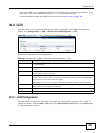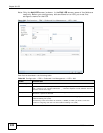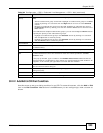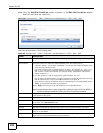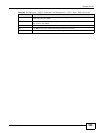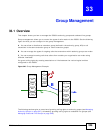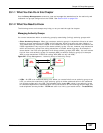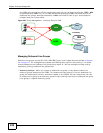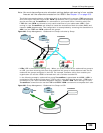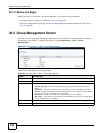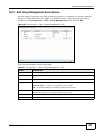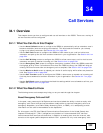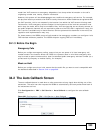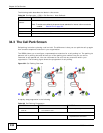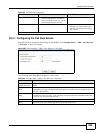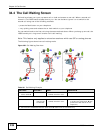
Chapter 33 Group Management
ISG50 User’s Guide
529
Note: You must also configure auto-attendant settings before calls coming in from outside
lines can call the extensions created on the ISG50. See Chapter 31 on page 503.
The following example shows a configuration with three outbound line groups. ITSP represents a
SIP trunk to your VoIP service provider. PSTN represents a link to your local traditional telephone
service provider and TrustedPeer is a connection to your branch office. Incoming calls from
ITSP and from PSTN are allowed to only reach extensions of your sales team (AG1). Calls
coming in from TrustedPeer are allowed to reach the extensions of both the sales (AG1) and
research (AG2) departments. This configuration is accomplished by removing the association to
AG2 from the ITSP and PSTN outbound line groups.
Figure 349 Group Management - Outbound Line Group to Authority Group
• LCRs (LCR is the outbound dialing rule) - When you create links from an outbound line group to
an LCR, you allow incoming calls from that outbound line group to make outbound calls via the
outbound line groups configured in the LCR. For example, someone calling from outside your
organization can use the ISG50 to forward their call to another outside line.
In the following example, outbound line group TrustedPeer is associated with LCR1. LCR1 is
comprised of two outbound line groups: a SIP trunk to your VoIP service provider - ITSP and a
connection to your local traditional telephone company - PSTN/ISDN. Calls coming in via the
TrustedPeer connection can use the ITSP and PSTN/ISDN connections to complete their calls.
Figure 350 Group Management - Outbound Line Group to LCR
Sales
Research
AG2
AG1
PSTN
TrustedPeer
/ ISDN
ISG
Internet
ITSP
Internet
ITSP
PSTN
TrustedPeer
LCR1
/ ISDN



